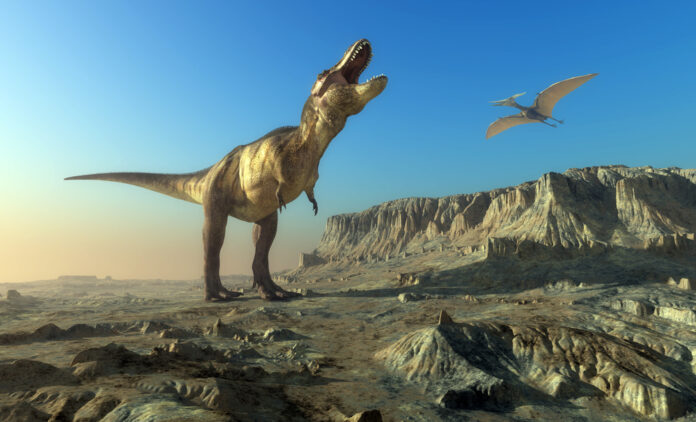During the Triassic Period (251 million to 220 million years ago), the first known dinosaurs grew rapidly and continuously — but so did many other reptiles that lived then, according to a new study in PLOS One. However, over time, dinosaur descendants generally kept up these fast growth rates, while the descendants of other reptiles eventually grew more slowly.
“One of the cool things that our study confirmed, is that, back in this Triassic system, even animals that were more closely related to living crocodiles actually grew pretty fast, and definitely much faster than their modern descendants,” says Kristina Curry Rogers, a professor of biology and geology at Macalester College in Minnesota, and one of the study’s authors.
Was There an Evolutionary Advantage?
The researchers already knew that later dinosaurs from the Jurassic and Cretaceous Periods grew faster than their crocodilian compatriots. To see if this held true for the very earliest dinos, they turned to a place where they could get fossils from both the earliest dinosaurs, as well as other four-legged creatures (tetrapods) living alongside them.
That place? The Ischigualasto Formation in San Juan Province, Argentina, because it holds some of the oldest and best dinosaur fossils anywhere. The formation also contains non-dinosaur creatures with which the researchers could compare.
“At this time, about 230 million years ago, dinosaurs were just getting warmed up in an evolutionary sense,” Rogers says. “Back then, a whole variety of other terrestrial tetrapods were more common, and more diverse.”
Looking at a variety of creatures could help the researchers discover whether any developed an evolutionary advantage. So, they created cross-sections of bones from several creatures from the formation that dated to the Triassic Period. Then they studied microscopic details within the bones that serve as markers for growth.
Read More: A Complete Dinosaur Timeline to Extinction: How Long Did They Roam Earth?
The Earliest Dinosaurs Growth Race
Their observations showed that the earliest dinosaurs were already growing at fast and continuous rates, much like their later Mesozoic descendants — but there were some subtle distinctions.
“Some Jurassic-aged dinosaurs seem to switch things up a bit, growing at high rates, but with occasional pauses throughout their life history,” says Curry Rogers. These periodical pauses seem to be missing in both the earliest dinosaurs as well as in in some of the non-dinosaurs that lived alongside them.
She hypothesizes that similar growth patterns among many animals during the Triassic Period — despite differences in body types and lifestyles — indicate that the “dawn of the dinosaurs” was a time of evolutionary experimentation, where rapid developments may have been key for survival.
“Growth rates, combined with many other special anatomical and behavioral characteristics of early dinosaurs probably played a pivotal role in their eventual success,” Curry Rogers concludes.
Read More: Do We Still Have Any Species Today That Are Descendants of Dinosaurs?
Article Sources
Our writers at Discovermagazine.com use peer-reviewed studies and high-quality sources for our articles, and our editors review them for accuracy and trustworthiness. Review the sources used below for this article:
Source : Discovermagazine






